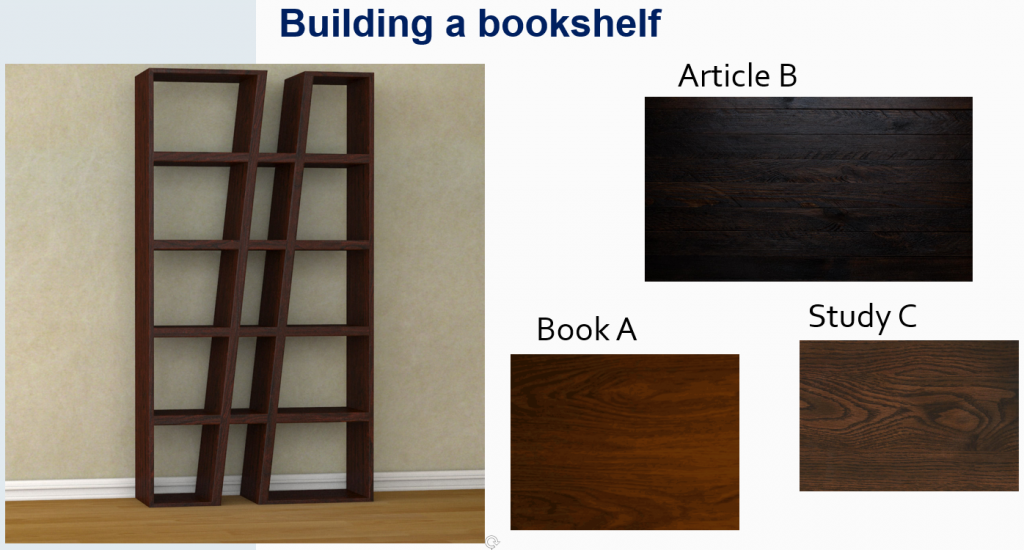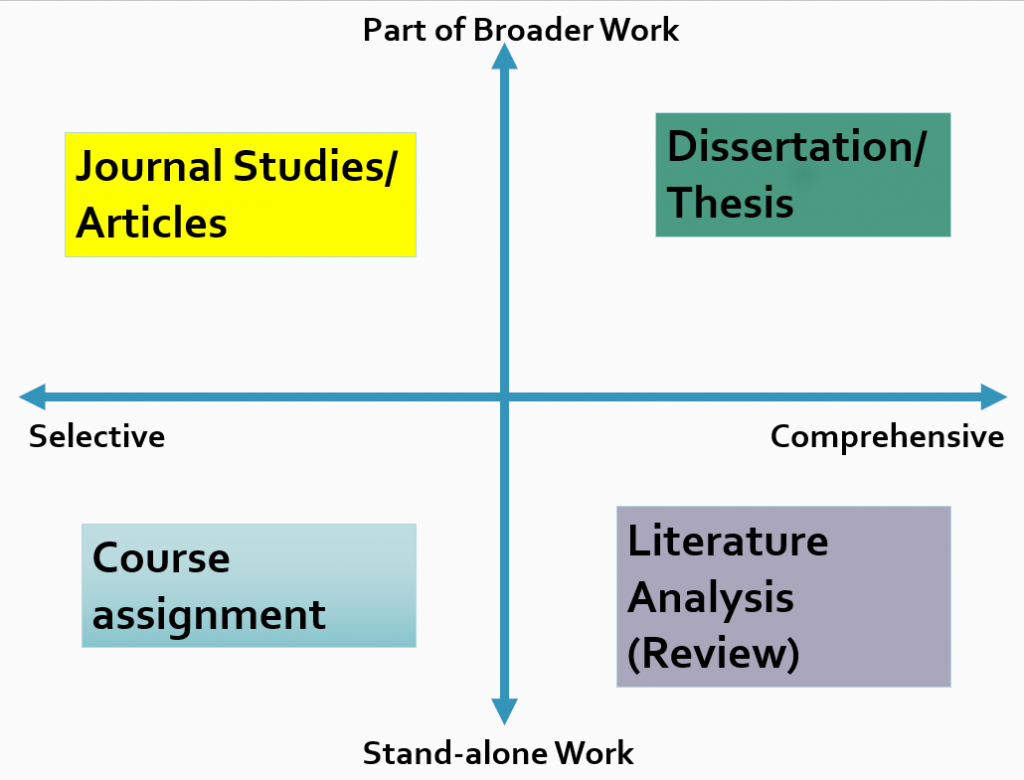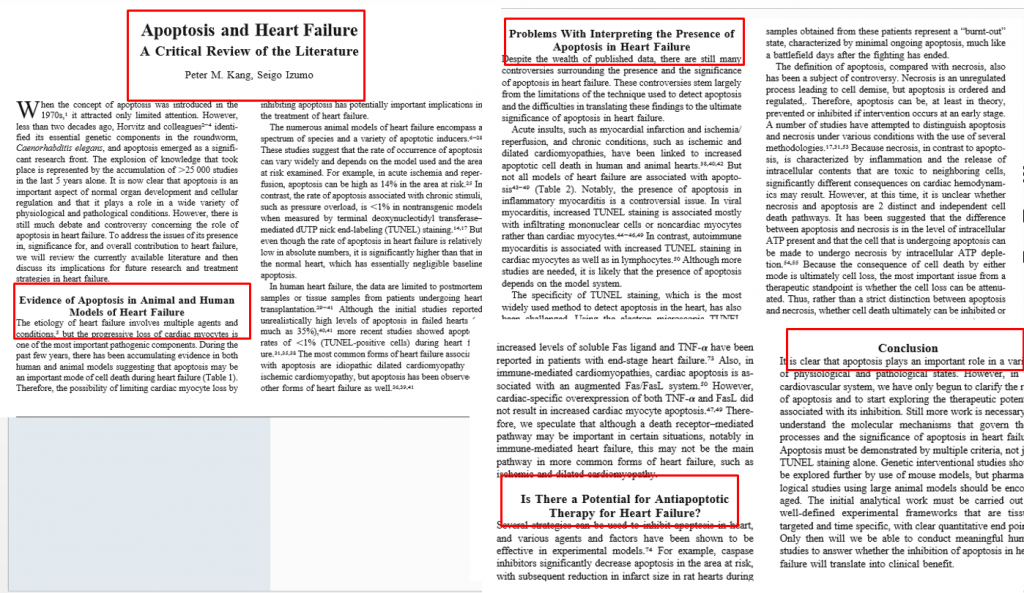Can a Paragraph of a Literature Review Contain Only One Author
What is a Literature Review
A literature review is an objective, concise, critical summary of published research literature relevant to a topic being researched in an article.
A literature review does Non:
A literature review does not simply reference and list all of the textile you take cited in your paper.
- Presenting textile that is not directly relevant to your report volition distract and frustrate the reader and make them lose sight of the purpose of your study.
- Starting a literature review with "A number of scholars have studied the relationship between X and Y" and simply list who has studied the topic and what each scholar concluded is non going to strengthen your paper.
A skilful literature review DOES:
- Present a brief typology that orders articles and books into groups to help readers focus on unresolved debates, inconsistencies, tensions, and new questions near a research topic.
- Summarize the well-nigh relevant and important aspects of the scientific literature related to your area of research
- Synthesize what has been done in this area of inquiry and by whom, highlight what previous inquiry indicates about a topic, and identify potential gaps and areas of disagreement in the field
- Give the reader an understanding of the background of the field and show which studies are important—and highlight errors in previous studies
Building Your Literature Review Bookshelf
Ane mode to conceive of a literature review is to recall about writing it as y'all would build a bookshelf. You don't need to cut each piece by yourself from scratch. Rather, you can take the pieces that other researchers take cut out and put them together to build a framework on which to hang your ain "books"—that is, your ain study methods, results, and conclusions.

What Makes a Expert Literature Review?
The contents of a literature review are determined by many factors, including its precise purpose in the article, the degree of consensus with a given theory or tension between competing theories, the length of the commodity, the number of previous studies existing in the given field, etc. The post-obit are some of the most important elements that a literature review provides.
- A historical groundwork for your inquiry: Analyze what has been written near your field of research to highlight what is new and significant in your study—or how the analysis itself contributes to the understanding of this field, even in a small way. Providing a historical background also demonstrates to other researchers and journal editors your competency in discussing theoretical concepts. You should also make sure to understand how to paraphrase scientific literature to avoid plagiarism in your work.
- The current context in which your research is situated: Discuss central (or peripheral) questions, problems, and debates in the field. Because a field is constantly being updated by new work, you can evidence where your research fits into this context and explain developments and trends in enquiry.
- A give-and-take of relevant theories and concepts that provide the foundation for your inquiry: For example, if you lot are researching the relationship between ecological environments and human populations, provide models and theories that focus on specific aspects of this connectedness to contextualize your study. If your study asks a question concerning sustainability, mention a theory or model that underpins this concept. If it concerns invasive species, choose material that is focused in this direction.
- A definition of the relevant terminology: In the natural sciences, the significant of terms is relatively straightforward and consistent. But if y'all present a term that is obscure or context-specific, yous should ascertain the meaning of the term in the Introduction section (if you are introducing a study) or in the summary of the literature beingness reviewed.
- A description of related research that shows how your work expands or challenges before studies or fills in gaps in previous piece of work: Y'all can use your literature review every bit bear witness of what works, what doesn't, and what is missing in the field.
- Supporting testify for a practical problem or outcome your enquiry is addressing that demonstrates its importance: Referencing related research establishes your area of research as reputable and shows you are building upon previous work that other researchers have deemed meaning.
Types of Literature Reviews
Literature reviews can differ in structure, length, and amount and breadth of content included. They can range from the selective (a very narrow area of research or only a single work) to the comprehensive (a larger amount or range of works). They tin also be office of a larger work or stand on their ain.

- A class assignment is an example of a selective, stand-alone work. Information technology focuses on a small-scale segment of the literature on a topic and makes up an entire work on its own.
- The literature review in a dissertation or thesis is both comprehensive and helps make upwardly a larger work.
- A majority of periodical articles starting time with a selective literature review to provide context for the inquiry reported in the study; such a literature review is normally included in the Introduction section (simply it tin also follow the presentation of the results in the Discussion section).
- Some literature reviews are both comprehensive and stand as a separate work—in this case, the entire article analyzes the literature on a given topic.
Type of Literature Reviews Found in Journals
The two types of literature reviews commonly institute in journals are those introducing research articles (studies and surveys) and stand up-alone literature analyses. They tin can differ in their telescopic, length, and specific purpose.
Literature reviews introducing inquiry manufactures
The literature review found at the beginning of a journal commodity is used to introduce inquiry related to the specific study and is found in the Introduction department, normally near the end. Information technology is shorter than a stand-lone review because it must be limited to very specific studies and theories that are directly relevant to the current report. Its purpose is to set enquiry precedence and provide support for the study'south theory, methods, results, and/or conclusions. Not all research articles contain an explicit review of the literature, just well-nigh do, whether it is a discrete section or indistinguishable from the rest of the Introduction.
How to structure a literature review for an article
When writing a literature review as part of an introduction to a study, merely follow the structure of the Introduction and motion from the full general to the specific—presenting the broadest background information nearly a topic outset so moving to specific studies that support your rationale, finally leading to your hypothesis argument. Such a literature review is frequently indistinguishable from the Introduction itself—the literature is INTRODUCING the background and defining the gaps your study aims to fill up.
The stand-alone literature review
The literature review published as a stand up-alone article presents and analyzes as many of the of import publications in an surface area of study as possible to provide background information and context for a current area of research or a written report. Stand-lone reviews are an splendid resource for researchers when they are first searching for the most relevant information on an area of written report.
Such literature reviews are by and large a bit broader in scope and can extend farther back in time. This means that sometimes a scientific literature review can be highly theoretical, in addition to focusing on specific methods and outcomes of previous studies. In addition, all sections of such a "review article" refer to existing literature rather than describing the results of the authors' own study.
In addition, this blazon of literature review is usually much longer than the literature review introducing a report. At the end of the review follows a decision that once again explicitly ties all of the cited works together to evidence how this analysis is itself a contribution to the literature. While not absolutely necessary, such manufactures often include the terms "Literature Review" or "Review of the Literature" in the title. Whether or not that is necessary or appropriate can also depend on the specific author instructions of the target periodical. Have a look at this article for more than input on how to compile a stand up-alone review article that is insightful and helpful for other researchers in your field.

Writing a Literature Review in 6 Steps
Then how practice authors plow a network of articles into a coherent review of relevant literature?
Writing a literature review is not normally a linear process—authors frequently go back and check the literature while reformulating their ideas or making adjustments to their study. Sometimes new findings are published before a written report is completed and need to exist incorporated into the current work. This also means y'all will not be writing the literature review at whatsoever one time, but constantly working on it earlier, during, and later on your study is complete.
Here are some steps that will help you begin and follow through on your literature review.
Step 1: Choose a topic to write nearly—focus on and explore this topic.
Choose a topic that you are familiar with and highly interested in analyzing; a topic your intended readers and researchers will find interesting and useful; and a topic that is current, well-established in the field, and nigh which at that place has been sufficient research conducted for a review. This will assistance you discover the "sweet spot" for what to focus on.
Step 2: Research and collect all the scholarly information on the topic that might exist pertinent to your study.
This includes scholarly articles, books, conventions, conferences, dissertations and theses—these and whatsoever other academic work related to your area of study is called "the literature."
Pace 3: Analyze the network of information that extends or responds to the major works in your area; select the material that is most useful.
Use thought maps and charts to identify intersections in the inquiry and to outline important categories; select the material that will be near useful to you review.
Stride iv: Describe and summarize each commodity—provide the essential information of the article that pertains to your written report.
Determine ii-3 important concepts (depending on the length of your article) that are discussed in the literature; take notes well-nigh all of the important aspects of this study relevant to your topic being reviewed.
For example, in a given written report, peradventure some of the main concepts are 10, Y, and Z. Note these concepts and and so write a cursory summary about how the article incorporates them. In reviews that introduce a written report, these can be relatively short. In stand-alone reviews, at that place may be significantly more texts and more than concepts.
Step 5: Demonstrate how these concepts in the literature relate to what you discovered in your written report or how the literature connects the concepts or topics being discussed.
In a literature review intro for an article, this data might include a summary of the results or methods of previous studies that stand for and/or ostend to those sections in your own study. For a stand-lonely literature review, this may hateful highlighting the concepts in each article and showing how they strengthen a hypothesis or show a pattern.
Discuss unaddressed issues in previous studies. These studies that are missing something you address are important to include in your literature review. In improver, those works whose theories and conclusions direct support your findings will exist valuable to review here.
Pace 6: Identify relationships in the literature and develop and connect your own ideas to them.
This is essentially the same as step v, simply focused on the connections betwixt the literature and the current study or guiding concepts or arguments of the newspaper, not merely on the connections between the works themselves.
Your hypothesis, argument, or guiding concept is the "gold thread" that volition ultimately tie the works together and provide readers with specific insights they didn't accept earlier reading your literature review. Make sure you know where to put the enquiry question, hypothesis, or argument of the trouble in your research newspaper so that yous guide your readers logically and naturally from your introduction of earlier work and evidence to the conclusions you desire them to draw from the bigger picture.
Your review will not only comprehend publications on your topics only volition include your own ideas and contributions. By following these steps y'all volition be telling the specific story that sets the groundwork and shows the significance of your research and you tin can turn a network of related works into a focused review of the literature.
In improver to these guidelines, authors likewise need to cheque which style guidelines to use (APA, AMA, MLA, etc.) and what specific rules the target periodical might accept for how to structure such articles or how many studies to include—such data can usually exist institute on the journals' "Guide for Authors" pages.
Finally, afterwards y'all have finished drafting your literature review, be sure to receive proofreading and linguistic communication editing for your academic work. A competent proofreader who understands bookish writing conventions and the specific style guides used past academic journals will ensure that your paper is ready for publication in your target periodical.
Wordvice Resource
If yous demand more advice on how many references to include in your newspaper, how to write the abstract or title for your manuscript, or how to impress the editor of your target journal with a perfect cover letter, then head over to the Wordvice academic resource website.
Source: https://blog.wordvice.com/how-to-write-a-literature-review/
0 Response to "Can a Paragraph of a Literature Review Contain Only One Author"
Post a Comment